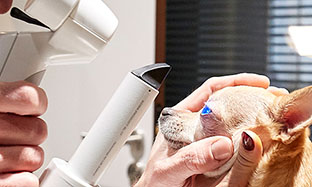
Chemical castration for male dogs
As they would do for an electronic chip, you vet places a resorbable implant between the dog’s shoulder blades.
After the implant has been placed, an active ingredient is released in a constant manner, preventing over a long period of time the production of the messengers necessary for the formation of testosterone and other sex hormones. After a few weeks, hormone levels drop to a baseline, just like after a surgical castration, resulting in decreased sexual behaviours. You have to count several weeks after the installation of an implant for the dog to be sterile.
On the intervention day, the dog needs to be brought to fasting : the castration is done under general anesthesia. The procedure consists in removing both testicles. For this, an opening must be made, a little behind the penis. It is then closed with stitches. Healing requires a dozen days on average. The dog’s reproductive capacity is then permanently removed.
-
Medical reasons
Unsterilized dogs can, with age, develop various diseases : testicular tumors or prostate attacks, for example. Castration, if it is done early enough, will limit the severity or the risk of these problems arising.
-
Prevention of uwnanted reproduction
Especially when a male and female dog live in the same household, it may be necessary to consider castration to avoid unwanted reproduction.
-
Behavioural problems
Some male dog behaviours such as : excessive libido, urinary marking, running away may be undesirable to the owner. Castration can help to reduce or to eliminate them.


